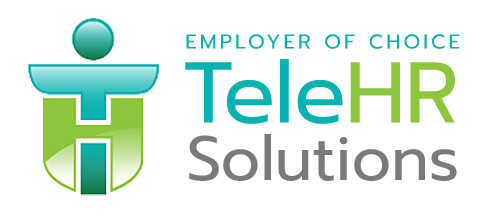A Professional Employer Organization (PEO) is an outsourcing firm that manages important human resources, payroll, benefits, and compliance tasks to small and medium-sized companies.
Say you’re a business owner, and you’ve already got a lot on your plate trying to make the business profitable. That’s where a PEO comes in. This third party takes care of all those time-consuming tasks like managing human resources, sorting out payroll, making sure you’re offering great benefits, and keeping everything compliant with the law.
In the Philippines, over 175,000 smaller and mid-sized businesses are already using PEOs. But what’s the secret behind their operation?
How a Professional Employer Organization (PEO) Works
Here’s how it works: Your company and the PEO contract, typically on a co-employment agreement. This means PEO employees come and work at your (the client’s) location, but the PEO is the one handling their payroll, taxes, insurance, and human resources tasks. They do the heavy lifting on administrative tasks while you keep running your business operations.
In turn, you pay the PEO, and the PEO pays the staff they employ.
What a Professional Employer Organization (PEO) Does Not Do
Even though the PEO handles your HR administrative tasks, it doesn’t mean that they have complete control over your organization. They don’t make decisions about your company independently and help with anything related to marketing, sales or product distribution. They don’t also have the authority over your employee’s salary rates and working hours or schedule.
Benefits of Using a Professional Employer Organization (PEO)
Partnering with a PEO to handle HR needs has many benefits, such as:
Access to Big-Company Benefits
With a PEO, you can offer your team the kind of top-tier benefits usually reserved for big corporate players. This makes your company a hot ticket for attracting and keeping great talent.
Cost Efficiencies
PEOs are great at economies of scale. What this means is that they can get deals on important things like business insurance, thanks to their bulk buying power. This means cost savings for you, plus you get a streamlined HR process.
Compliance Expertise
Moreover, keeping up with employment laws can be a headache, especially if you’re employing talent across jurisdictions with differing rules — like the Philippines. PEOs are pros at this, handling all the legalities and keeping you in the clear without needing an attorney on your payroll.
Risk and Safety
PEOs provide safety audits and training programs to limit claims on your employee’s compensation insurance. They also assist with Occupational Safety and Health Administration (OSHA) inspections.
Enhanced Productivity
With PEOs owning time-consuming payroll, compliance, and other administrative burdens, your team can focus on the big picture and things like innovation and strategic growth.
Considerations When Choosing the Right Professional Employer Organization (PEO)
When choosing a PEO, it’s essential to evaluate several critical factors to ensure they align with your company’s needs and provide the necessary support and expertise. Here are the things you should consider:
Fiscal Stability
It is crucial to assess PEO’s financial performance, track record, and longevity in the industry to ensure your company’s operations are protected and to manage risks and liabilities.
For your peace of mind, you may inquire about their risk management practices and insurance coverage. A reputable PEO will be transparent about its financial performance and provide access to relevant information upon request.
Aligned with Company Needs
Choose a PEO with experience in your industry or a similar field. This assures they have a deeper understanding regarding your business requirements and compliance needs.
It is essential to evaluate the PEO’s service to ensure they align with your company’s needs and goals. As your business grows, you’ll need a PEO that can adapt and provide continued support.
Compliance Expertise
A PEO must have an in-depth knowledge of labor laws and regulations. They are responsible to keep you informed of any changes and guarantee that your company remains compliant.
They also provide guidance on HR best practices and help you develop policies that align with the business standards and legal requirements.
By staying up-to-date on compliance issues, a PEO can help you mitigate risks and liabilities.
Things to Avoid When Hiring a Professional Employer Organization (PEO)
While PEO services are certainly useful, some downsides exist.
Unclear Delineation
Switching over to a PEO model can be a bit bumpy, especially if job roles overlap or there is no clear delineation between existing staff and PEO workers. These are expected growing pains, but clear communication can minimize, or sometimes outright eliminate, these issues.
Standardize HR Management
PEOs tend to standardize things like pay structures and HR policies across their client base (mostly to simplify things for them). This might mean less wiggle room for custom solutions. In these cases, you, as the client, need to be clear and upfront about what kind of HR management you need.
Control Workforce Management
You’ll be handing over some control to the PEO, especially in daily workforce management. If you like more granular control over handling your human talent and acquisition, a PEO may not be for you.
Future of Professional Employer Organizations (PEOs)
Looking ahead, PEOs are becoming a popular choice for many businesses. They offer a neat package—such as managing HR tasks and providing big-business perks at small-business prices—and their popularity is only growing.
In today’s fast-changing business world, PEOs are helping leaders stay focused on their main goal: driving their business vision forward.
Looking for experts to help you simplify your workforce? Book a consultation at TeleHR Solutions today! Call us at +63 917 892 2337 (mobile) or +63 284 785 826 (landline), or email us at [email protected].
Ready to Simplify Your Workforce with Our PEO/EOR Services?
Set up a consultation with Tele HR Solutions today! Call us at +(63) 917 892 2337 or send an email to [email protected].
